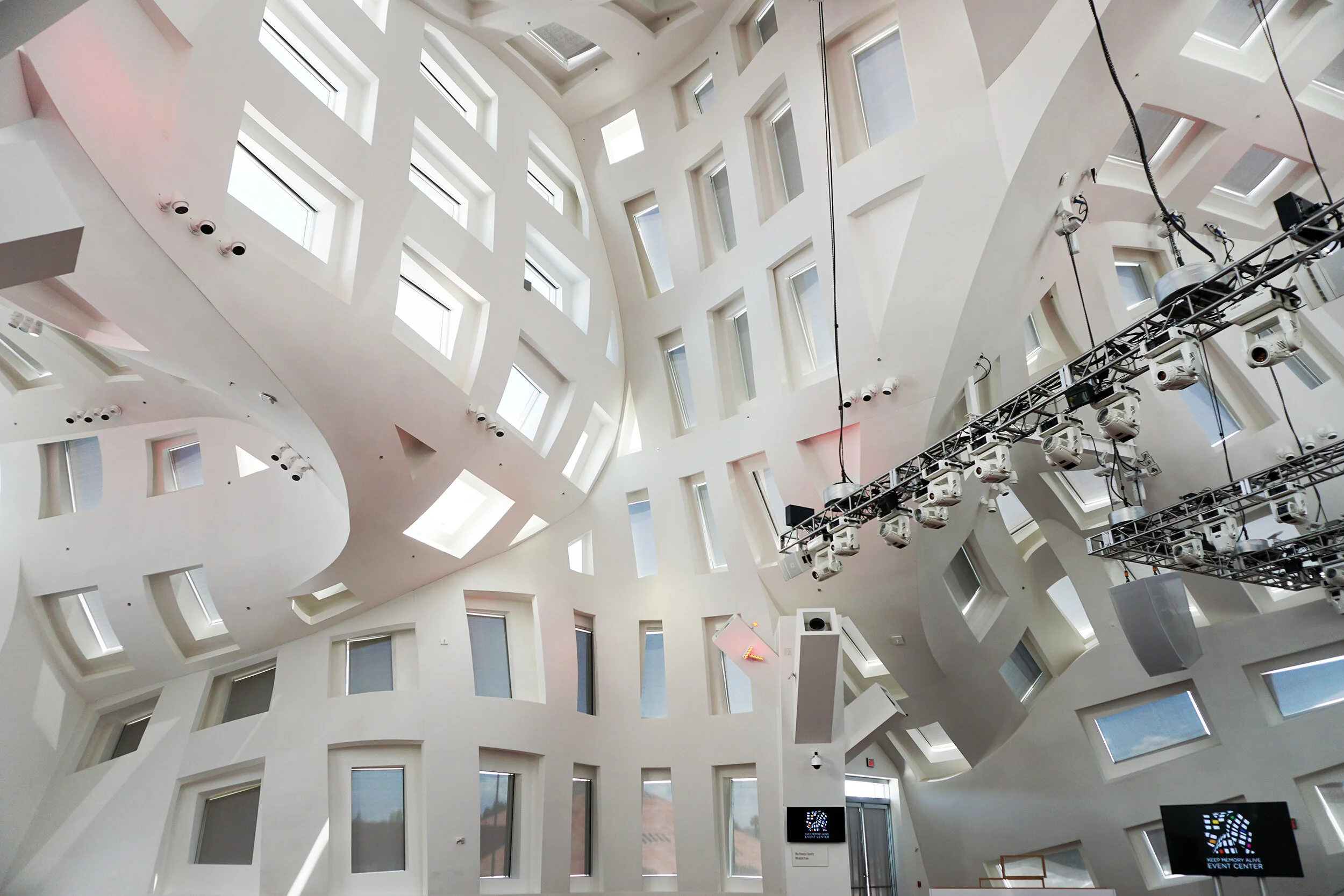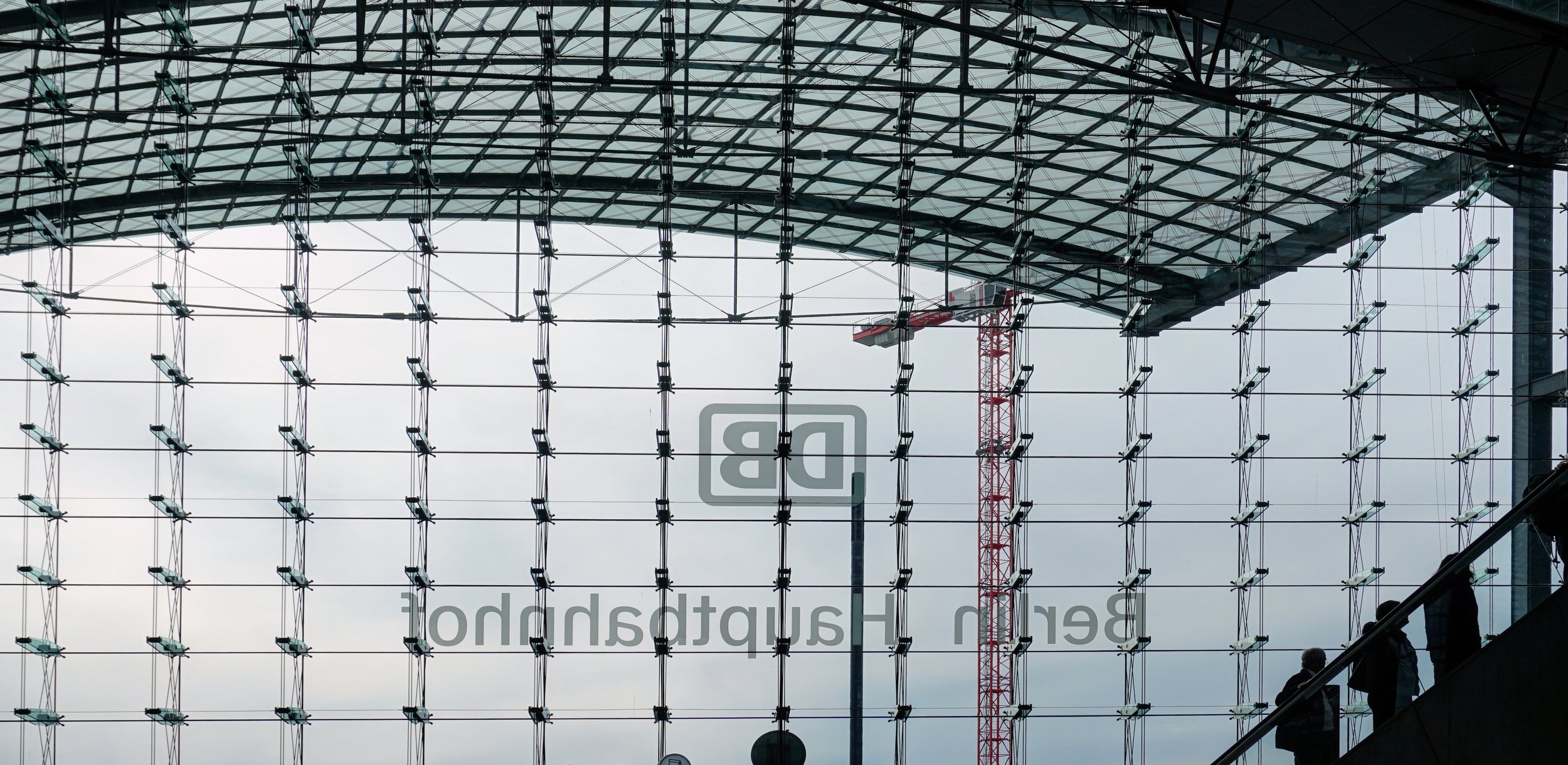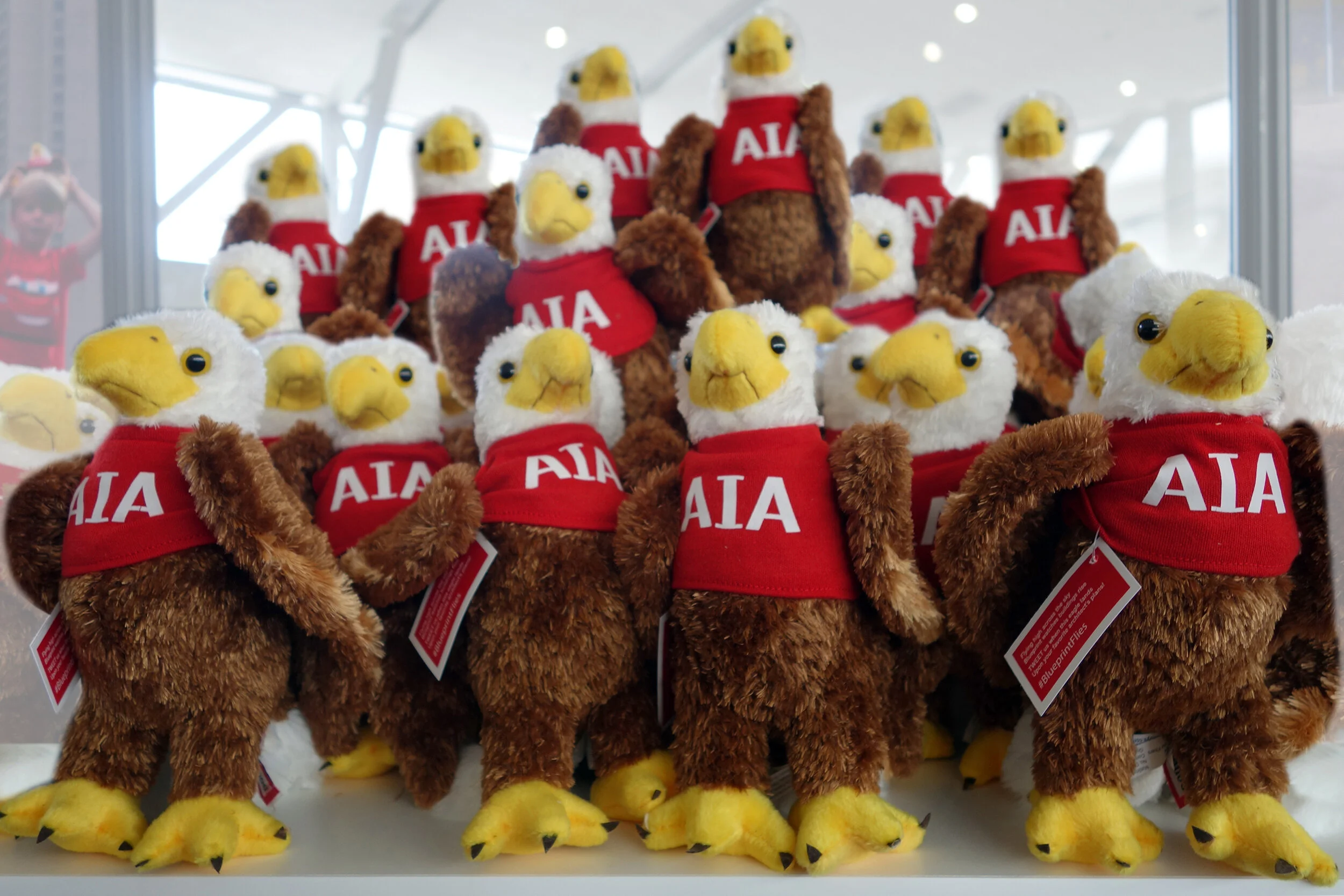
Page 2 of 2
Las Vegas, Nevada
The devil don’t take a break, that devil don’t take a break, the devil don’t take a break
As with all AIA Conventions, or Conferences, or whatever they’re calling them now, the only real reason to go is the building tours. You can earn credits anywhere, or watch the keynotes later online from the comfort of home. Tours allow you to experience the place you came all that way to see, and often they include special experiences that you just can’t do on your own.
This first picture from the A’19 building tours is of the Lou Ruvo Brain Institute, located across from the Government Center and the Design Center in a part of the city that thinks it’s, I don’t know, let’s say Phoenix.
The Lou Ruvo Brain Institute was designed by Frank Gehry and includes two distinct parts. The actual brain institute part (affiliated with the Cleveland Clinic) is a relatively boring building flanked by a detached, expressive sun screen facade (see picture), Inside the brain institute part, you generally feel like you could be anywhere, nothing feels all that distinctive or special.
All that changes when you get to the second part.
When Frank Gehry designed the building, he included an incredibly expressive exterior on the corner (see first photo) that created a big leftover room that initially no one asked for. This big leftover room became an event space and a profitable one at that. Profits from events help fund the brain center.
What is interesting about this particular room is that often (not always), buildings by Frank Gehry that have interesting, sculptural exteriors often lead to buildings with interiors that feel like leftover, undeveloped space. It’s hard for example to experience the lobby of the Disney Concert Hall and not think that all of the design went into the exterior and the hall, and that the lobby just fills in what’s left. Here in Las Vegas, you finally get an interior room worthy of its exterior, a great big empty space with white walls and cutout windows that curve and angle in all sorts of impossible directions.
Let'‘s change gears and think big. Real big.
One of the most interesting tours that A’19 had to offer wasn’t in Las Vegas or even in Nevada but instead in San Bernadino County in California (although honestly it was just over the state line from Nevada). Ivanpah is a massive solar thermal facility, where an array of over 170,000 heliostats circle a central tower and generate steam power. Free electricity for all, unless you count the costs of building and maintaining the plant. Or the environmental cost. The design of the plant basically involves redirecting and focusing the sunlight from an area of about a square mile to a single point, where the surface glows bright from 1,000 degree temperatures. However bright lights attract insects and insects attract birds, and birds don’t do especially well if they happen to fly between any of the heliostats and the bright glowing 1,000 degree tower.
Most of the photos that you see of Ivanpah are aerial views, where giant, dramatic glowing circles of heliostats light up the desert floor. There is a reason you don’t see all that many ground level shots. While really interesting, the heliostats aren’t all that impressive from the ground level safety zone of the facility. And even the central tower, all aglow under the bright hot desert sun and ready to kill all the birds it can find, is not nearly as impressive as all of those aerial shots you see online.
Cirque du Soliel’s “O” at the Bellagio is a magical experience that I first saw years and years ago (I say “first” but really only have seen it once), and the A’19 backstage tour at the “O” theater wasn’t quite magical (after all they explain how a lot of the effects are accomplished) but was still a really impressive look at how the magic happens. The tour took you on stage, backstage, underwater (through windows), into practice rooms and dressing rooms and costume shops as they explained the effort it takes to make something look magical on a relentless, twelve shows a week schedule. And also warned us to please not move Shelly.
After going backstage at “O,” A’19 separately took us backstage at the Bellagio itself led by the architects of the hotel. The back of house tour took you inside a machine where 8,000 people magically move luggage, find their uniforms through an automated locker system, eat at an employee cafeteria with food as good as you would get in the casino and walk through labyrinthine corridors finished only a level (or two) below the rest of the casino. On the tour, the guides talked a lot about the philosophy of original owner Steve Wynn, specifically how if you were an employee at a five star hotel that even the employee back of house areas need to feel like you’re in a five star hotel.
The tour also took us to through the fountain maintenance areas and ended up at Picasso, a lagoon level restaurant with the exact opposite view of the fountains from what I’ve been used to all of these years. A great place to end the slideshow, under the trellis and a lagoon away from everything bad (and good) about the strip.


